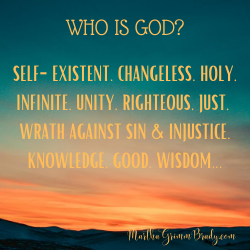Click here for more posts in this series.
The two blocks we are going to discuss today are Bear’s Track and Drunkard’s Path. They are blocks that have been around a long time. Of course, that is why no suspicion was aroused when quilts with these blocks were hung on porches, fences, or clotheslines for slaves to see. People seeing them just assumed the bedding was being washed or aired out.
How did the Underground Railroad get its name? I’m not sure all of the reasons. There were no railroads involved and it wasn’t underground in the literal sense. However, those who took slaves in wagons and helped them along the way by feeding them, were called conductors. Those moving along the way were called passengers.
The Bear’s Paw Quilt
The Bear’s Paw quilt was hung to encourage Underground Railroad passengers to follow bear excrement on the path. That way they would be able to find water and food. Of course, they did need to watch out for bears!
If you would like to make the Bear’s Paw block, click here for directions to make a version of it.
The photo above is a block from Drunkard’s Path. I have been hunting for a photo of a quilt with all Drunkard’s Path blocks. A whole quilt with this block will show you how it gets its name. Click here for a photo of a whole quilt in this pattern. It makes it clearer to understand why Drunkard’s Path had the meaning it did.
Why the Drunkard’s Path?
What did this pattern mean to those on the Underground Railroad? It meant that the area they were heading into was full of people hunting for them with dogs. The advice was to remind them to travel more in a zig-zag line so they could not be tracked as easily by the dogs.
If you would like to make this block, click here for directions. The block shown is arranged differently from the one in the other photo. The directions tell you how to make the block. You can lay it out in a variety of ways.
Some beliefs that affected quilting
There was also a belief, probably left over from Africa, that going in a straight line was bad luck and that evil spirits would have a harder time finding you if went in crooked lines. Another reason why triangles were used in quilts, both in the white and black communities, was because of the symbolism of the trinity: Father, Son, and Holy Spirit. Often, our theology and superstitions get confused. Combined with the superstition, it is easy to understand why so many quilts have triangles in them…for good luck!
As I have read these articles about the Underground Railroad, and even the history of these quilts and how much of these codes are true, I have been reminded again, that nice stories like this have been used by white people to somehow paint a silver lining on the whole history of slavery. Or at least that has come across to many in the Black community.
I do not want to communicate in any of this,
that these nice stories about quilts somehow offset the ugliness of slavery.
They absolutely don’t!
Personally, I don’t want to communicate that at all! Slavery was awful in the best situations. To have adults in a situation where they didn’t have their freedom and were bought and sold like property had to have been horribly demeaning. Even worse, was the way families were split up as wives could be sold away from husbands as well as children sold too, never to be seen again. There is no way to paint a silver lining on the treatment of human beings as if they were property. There is no excuse for that kind of treatment. The fact that many who lived this way were professing Christians is horrifying beyond belief.
In a home where they were treated well physically, they still didn’t have their freedom and in many ways, were treated as less than human. They didn’t have the choice to behave as adults and be volitional as human beings are supposed to be. They weren’t paid for their work, They didn’t have time off to recreate. In best case scenarios, they were taught to read. But they were treated, not as equals, but as slaves being patronized. That is not the Godly way to treat other humans even if we are nice to them.
In worse case scenarios, they were beaten and abused in many ways. They had no recourse for protection under the law. They had no vote. They had no standing as citizens in this nation. It was horrible.
History is a funny thing. It tells us the facts of a given period of time.
It also teaches us if we are willing to learn from it.
Not everyone is willing to learn from history.
However, I’m sure that a hundred years from now, people will look at us and say similar things about things we tolerated as a culture, and specifically, as Christians in this culture. Do I think all vestiges of slavery and the Confederacy should be torn down and done away with. NO! Why? Because if we remove that and many other black marks from our history, we will forget the lessons we have learned from it.
As with all of history, there were still good things that came out of it. It doesn’t make slavery right, but there were many ideas apart from slavery, that were good that had to do with the development of our nation. It isn’t wise to throw out the baby with the bath water. We just have to recognize that those who were involved in our history were not the perfect saints we wanted to hope they were. They all had feet of clay. It is good for all of us to remember that about all our leaders.
The Underground Railroad was a necessary and important element in our history.
There was good reason for the Underground Railroad. Many put their lives on the line both in order to escape and in order to protect those who were escaping. There was good reason for slaves to escape. It was necessary to escape slavery. None of them wanted this life for their children. They were willing to risk their lives for it. The estimate is that over 100,000 slaves escaped through this avenue. It’s pretty amazing, isn’t it?
In the end, Abraham Lincoln signed the Emancipation Proclamation and a couple of years later, the Civil War ended. It certainly didn’t solve all the problems that stemmed from slavery. But it did start the process, an all too slow one, of freeing the slaves.
**Resources: Article online by Marie Claire Bryant about Underground Railroad Quilt Codes














Martha…thank you for this! I love what you’re teaching me about quilts and I appreciate your commentary about our nation’s difficult history. I also agree that we MUST “recognize that those who were involved in our history were not the perfect saints we wanted to hope they were. They all had feet of clay. It is good for…us to remember that about all our leaders.”
So true! And I think the problem comes when we want to turn a blind eye to the bad stuff and pretend like it’s “not that bad.” If we could all be just a little less selfish and a little more willing to walk a mile in someone else’s shoes, we’d do a lot better at listening and seeking to understand. Thank you for doing that with these posts. God bless you.
thanks so much kem. (a friend from a local writing group.) so glad you came by to read what i had to say. i appreciate it. kem has a podcast that is very interesting. this month it includes beauty info for black women…skin, hair, etc. each month, she has a theme. it has an interview format. i think this is the correct link:https://www.facebook.com/heygirlwriter/. the copies of the programs are there for you to watch as well.